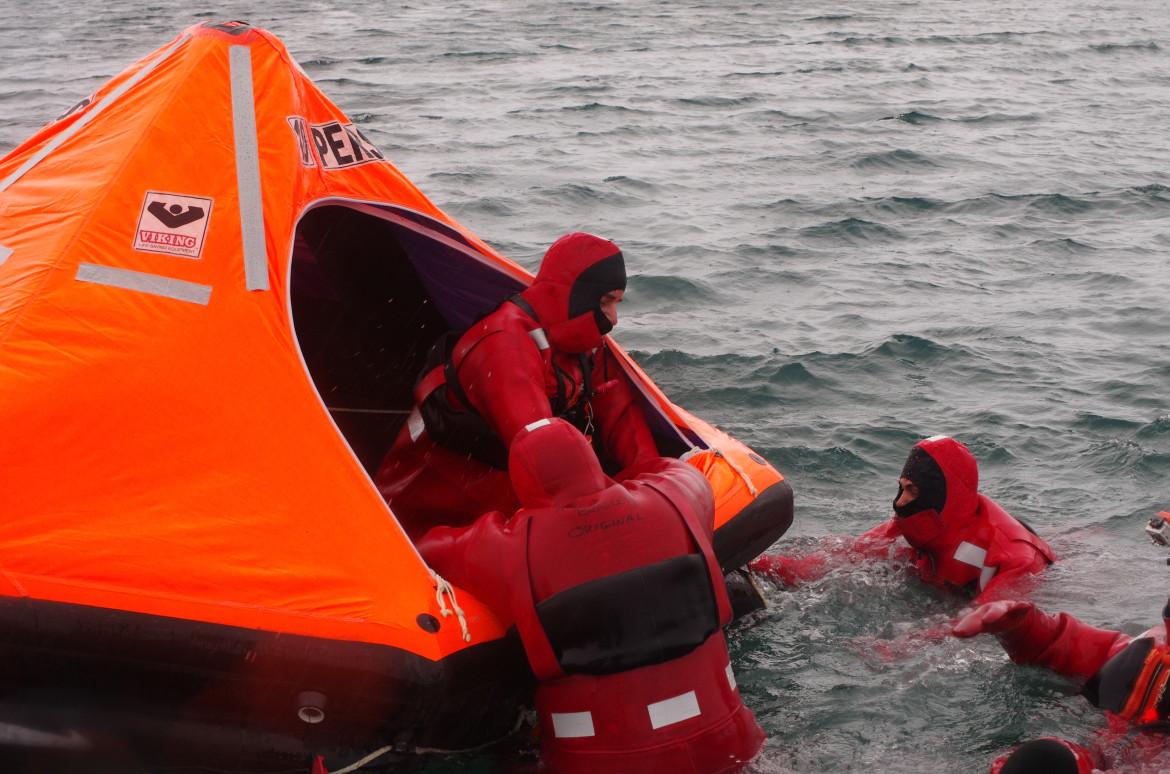The dangers of the Bering Sea crab fishery have been made famous by the reality TV show Deadliest Catch. But, in the last 15 years, that industry has become much safer, in large part thanks to collaboration between industry, scientists and regulators. We wondered: are there lessons that the oil and gas industry could learn from the crab industry’s safety gains?
We started on the docks in Dutch Harbor, Alaska with skipper Rip Carlton. He described one of the most memorable close calls during his nearly 40 years as a crab fisherman. “I saw a guy get ripped off the side of a boat right in front of me by a huge sea,” he recalled. “He was on the side of the [crab pot] stack, probably 25 feet up and the wave came up and took him right off. And I could not believe what I had just seen.”
The crew managed to get the man back onto the boat — and then almost killed him again. “He’d been in the water I don’t know, two or three minutes. He was definitely hypothermic,” Carlton said. “First thing we did is take his clothes off, throw him in a hot shower, and give him a shot of whiskey. That’s exact opposite of what you should do!”
In the 80s and 90s, safety wasn’t so much an afterthought as an absent thought for the crab fleet. “Back then we had no safety training, we didn’t have life raft drills, some boats didn’t even have survival suits that can help you stay alive if you go into the water,” Carlton said.
All of that contributed to the Bering Sea crab fishery’s fatality rate in the 90s of 770 per 100,000 fishermen. “Which is astronomical,” said Mary O’Connor, the deputy director of the Alaska Pacific division of the National Institute for Occupational Safety and Health or NIOSH. By comparison, the worst oil and gas fatality rate in the nation right now, in North Dakota, is 10 times lower.
It was clear something had to be done. So, NIOSH tried what’s called the public health approach. The first step was getting information. For commercial fishing, NIOSH asked the Coast Guard to share detailed reports about vessel accidents.“They found that at least eight of the twelve vessels that were lost en route from the crab grounds were loaded,” O’Connor said. Overloaded, to be precise — with too many crab pots. In freezing spray conditions, that was causing vessels to capsize and sink.
So, then came step two: intervention. NIOSH isn’t a regulatory agency, but it shared the information with the Coast Guard, which started mandating dockside safety inspections. “If they were compliant, that was all good and well,” O’Connor said. “If they weren’t compliant, then they weren’t allowed to leave the dock.”
The results were dramatic. While 73 Bering sea crab fishermen died in the decade prior to the safety checks, 12 have died since then. Although there are other factors that also played a role, Rip Carlton, the skipper, says having more information and more people looking over the industry’s shoulder changed the culture of safety aboard vessels. “You’re at the dinner table and you talk about the danger — what’s out there, what you guys should be looking at. So the guys keep being reminded about safe practices and things to do and not to do,” he said.
But can the public health approach – information followed by intervention – be successfully applied to oil and gas? The short answer, according to Kyla Retzer, the head of NIOSH’s oil and gas safety program, is yes. But there are complicating factors. Unlike for the fisheries, there’s no Coast Guard for the oil and gas industry, collecting fatality information.
“Sometimes there’s very, very little information about the event,” Retzer said. “So, in order to use data and use this public health approach, we have to figure out a way to get more information about the circumstances.” Not only is data limited — so is access. Retzer points out that it’s harder to get onto to drill sites than fishing vessels. “Anyone could walk onto a harbor and talk to commercial fishermen,” Retzer said.
Still, Retzer and her colleagues are working on developing an approach for oil and gas that follows the Alaska model — and she’s hopeful that it will work. “People in this industry work really hard in dangerous environments with heavy equipment. And they deserve the right to have every step taken to keep them safe.”








